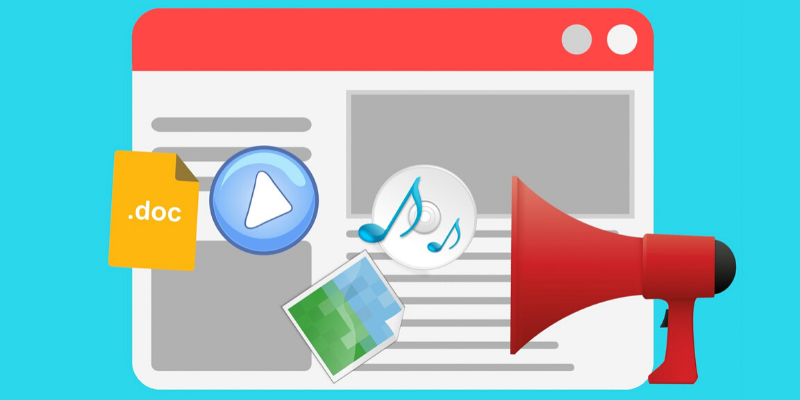Cloud Telephony / IVRS - A Revolutionary Approach to Monitoring Government Programmes

Lack of resources, control and extensive turn around times has always plagued the MIS of large scale government operations. The Daily Monitoring System (DMS) could just be the solution to these impediments. Be it accurate sampling, real time information snapshots or even analysis generation, the DMS provides all these functions within a framework that enables communication between the lowest points of data collection and the highest levels of management in the government.In conversation with YourStory.in’s Abilasha Dafria, Sudhanshu Tripathi, gives us an inside perspective on how this unique venture was conceived
Tell us about your project.
DMS has been devised for data collection on a real time basis directly from the grassroot level of programme implementation and for monitoring programmes efficiently and effectively. It marks a paradigm shift in the system of data collection and MIS of huge government programmes and activities, monitoring them on auto-pilot mode. The Decision Support System built into the system provides objective criteria on which remedial intervention can be made and policy decisions can be taken. It has been implemented by the Mid Day Meal Authority (MDMA) in the State of Uttar Pradesh for effectively monitoring the Government of India assisted Mid Day Meal Scheme (MDMS) covering at present about 1.52 lac schools in U.P. and about 221 lac children enrolled there.
The initiative is a unique process innovation with no parallel anywhere in the world. As implemented for the MDMS in U.P. the system tracks the number of schools that serve / did not serve a mid day meal on any particular day as well as children who had lunch in the school on the prescribed working days.
The daily MIS that is generated helps the district / state authorities in zeroing-in on schools that skip these meals and hence, can take necessary remedial steps. Exception reports generated by the System help in efficient inspections and effective monitoring. Reports over the last year are available on a daily basis on the system website from which can be used to generate analytics as required.
How does the entire process work?
The system is conceived on the basis of an interface between a computer and a mobile phone through an out bound dialing solution wherein calls are placed to all the teachers from a virtual number using PRI (Primary Rate Interface) lines. Every day, after meals are served, Interactive Voice Response (IVR) calls are placed by individual names to the mobile phones of the teacher-in-charge. The teachers, in turn, key-in the number of students who availed mid day meal on that day on their mobiles phones. In case the meal could not be served in a school, the teacher has to key-in zero on his mobile. The data so keyed-in is appended in the data-base of the central server and MIS for all the schools of the State is generated by the evening on the website of the system www.upmdm.in
Further to it, there is a full fledged system of calling protocols, repeat calls, call escalation, and alerts, etc.. By the evening, all the District magistrates and concerned district officials receive SMS from the System informing them of the status of mid-day meal in their respective districts. The State level officers simultaneously receive this alert for the entire State.
How did the idea come about?
The problem to which the above initiative is a solution lay in the process of traditional and primarily manual system of monitoring government programmes. Though e-governance has progressed a lot, the scenario was largely the same for MDMS also. Information for the number of children availing meals was available district-wise. But when decision making was required on different aspects of the scheme
It was not possible to segregate the information below district level and the time-lag was a major hurdle, since the periodicity of this information was quarterly or at best monthly.
Thus, the situation before the initiative was plagued with the following kinds of issues:
Spatial - School-wise report not available at the district/ state level.
Tempor -: Monitoring of the scheme was possible only on a monthly / quarterly basis, not on a daily basis. Monitoring - Physical inspection was based on random selection and not on an exception basis.
The vision of the initiative was conceived by Mr Sudhanshu Tripathi, an officer of the State Civil Service of Uttar Pradesh and posted as Chief Finance Officer in the Mid Day Meal Authority, U.P. Mr. Tripathi submitted a concept paper way back in 2007 which visualized an SMS based information flow wherein SMS of number of children availing MDM would be sent by all the school teachers daily on a central server and a web portal with a built-in messenger service would record information so received on a database and link it with an MIS for daily reporting.
The concept so visualized by Mr. Tripathi got an impetus in 2009 when Mr Amod Kumar, an officer of the Indian Administrative Service joined MDMA as its Director. However, on account of the problems of language, user-friendliness, cost, modifications etc SMS based solution, somehow lacked feasibility. Above all toll free sms was not possible across all the networks; so the sms based solution was found to be unable to ensure that teachers do not pay out of their pocket for giving the information.
It was in this perspective that the cloud telephony and IVRS was zeroed-in as a viable technological alternative. Literature was sought for any previous international or national experience in this regard. It was found that though IVRS was being used in different sectors for information dissemination, but for large scale data collection and for generating MIS and DSS on account of that, IVRS was not used anywhere in the world. So it was decided to experiment with this system.
When was this launched?
It was launched on June 1, 2010 and has been running successfully since then.
Where did you come up with first prototype?
The System was designed and developed in two months and was implemented across the State of Uttar Pradesh for monitoring the Mid Day Meal Programme in one go. It is revolutionary in the sense that the change introduced and perceived in the process of information flow of a programme has like this not been done on a per meal basis before.
How has the response been so far?
UNICEF has done a study of this initiative and has appreciated it. The impact of the initiative has been discussed in detail by UNICEF in the study, Process Documentation Report of IVRS Based Daily Monitoring System for Mid-Day Meal Scheme.
The response of the initiative has been measured quantitatively on account of the analytics that are available in the MIS since the start of the initiative i.e. June, 2010. Further, it has been measured qualitatively on account of the processes described above which usher in Government Process Re-engineering (GPR). With the re-designed process of information flow, value addition is apparent for the ultimate beneficiaries of the MDMS, the children. The number of such schools where meals were earlier not served is coming down substantially – about 5% over October / November 2011 down from about 30% over June / July 2010.
Teachers are a happy lot since they fulfill their responsibility of informing the higher ups in case meal was not cooked – information which was otherwise likely to be curbed. The teachers also feel assimilated in the process of governance since their information is directly accessed by the highest levels of the decision makers in the Government.
On account of the success of the project, The Government of India has decided to replicate it for monitoring the Mid Day Meal Scheme in the entire country. Further, the Govt. of U.P. has replicated it for monitoring book distribution in another GOI programme and also for the Integrated Child Development Services (ICDS) Scheme. The initiative has won many accolades, the latest being its short-listing by Government of India for the Prime Minister’s Award for Excellence in Public Services and for National e-Governance Awards.
Who are the various stakeholders involved in the process?
Schoolchildren: With the redesign of the processes, value addition is apparent for these ultimate beneficiaries of the MDM Scheme as the number of defaulting schools is coming down substantially
Monitoring agency i.e. Govt. MDMA, Division & Districts:
- Identification of problem area on real time basis means immediate corrective measures.
- Monitoring based on exception reports.
- Objective input for policy intervention.
- Transparency and accountability of data ensured.
- Checking of leakages and saving of scarce resources.
Society:
- Assimilation of teachers in the decision-making process
- Involvement of School Management Committee (SMC) in the DMS would ensure concurrent social audit
- Community ownership of the MDM Scheme
Do you monetize? What’s your revenue model?
The solution is built on a revenue generation model; accordingly user charges can be levied, if and when it is so decided, for giving info to public. However, this would depend on the nature of programme and services for which the initiative is being used and accordingly appropriate decisions can be taken in this regard. Different network operators can be roped in for providing the requisite info to the public after one registers oneself for a particular type of info; revenue sharing with the operator can be decided and the system can not only become self-sustaining but could generate profits in time.
How does it feel to be an NSIH finalist?
Being an NSIH finalist is an enthralling experience. Having been selected as one of the top three from among hundreds of brilliant projects brings me a great sense of fulfilment as it shows that good work does pay its dividends. The project received its well deserved recognition after we presented it before the jury and garnered their positive reactions.








![[Startup Bharat] Y Combinator-backed BeWell Digital is enabling the digital transformation of radiologists](https://images.yourstory.com/cs/2/40d66ae0f37111eb854989d40ab39087/ImagesFrames31-1648033042143.png)


